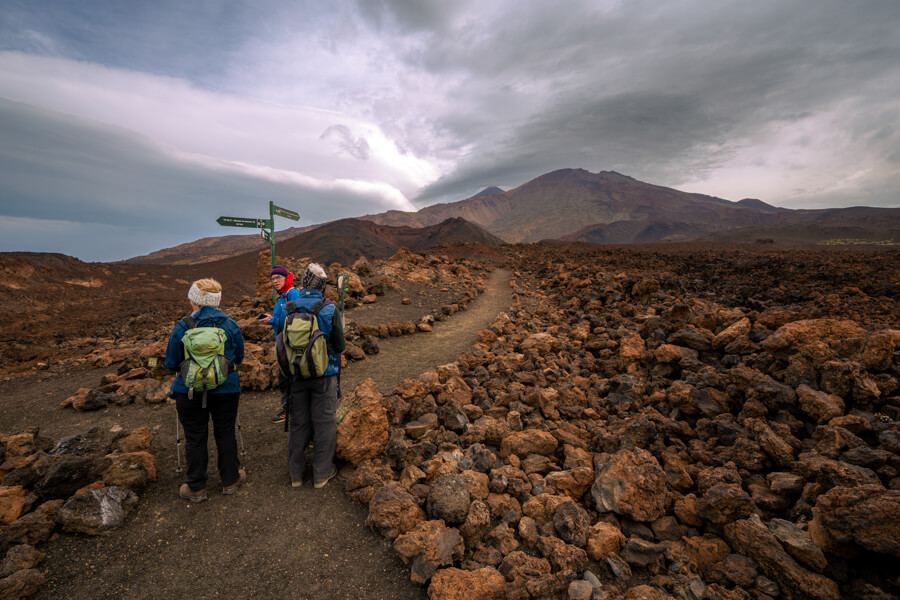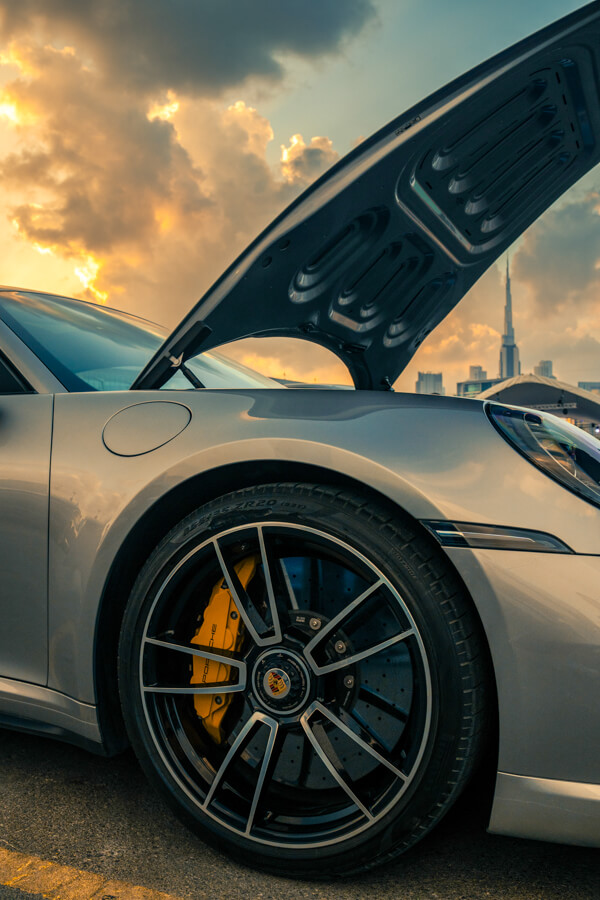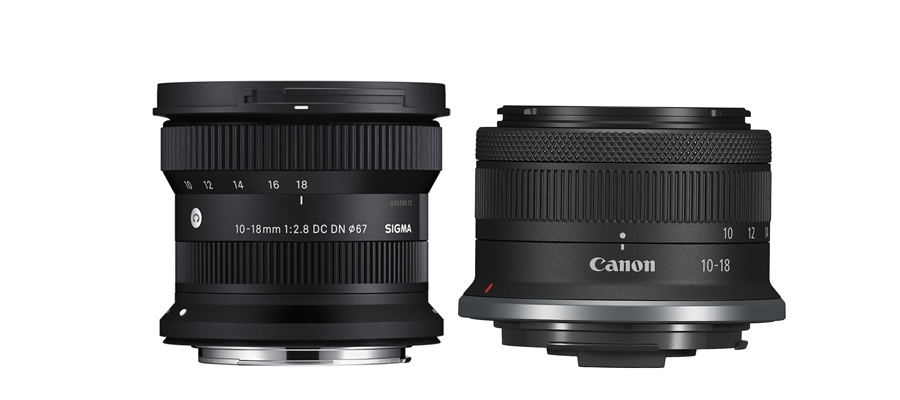The Sigma 10-18mm f/2.8 DC DN costs twice as much as the Canon RF-S 10-18mm f/4.5-6.3 IS STM, so let’s see if it’s that much better in terms of image quality and performance.
Sigma 10-18mm f/2.8 DC DN
- Focal Length: 10-18mm
- Max Aperture: f/2.8
- Mount: Canon RF-S
- Stabilized: ❌
- Weather-Sealing: ❌
- Weight: 260g
- Released: 2023
- Amazon ($$)
Canon 10-18mm f/4.5-6.3 IS STM
- Focal Length: 10-18mm
- Max Aperture: f/4.5-6.3
- Mount: Sony, Canon RF-S
- Stabilized: ✔️
- Weather-Sealing: ❌
- Weight: 150g
- Released: 2023
- Amazon ($)
The Sigma 10-18mm f/2.8 DC DN is a small, lightweight lens with an amazing f/2.8 aperture. This makes it ideal for ultra-wide and low-light photography in almost any scenario.
The Canon RF-S 10-18mm f/4.5-6.3 is an extremely compact ultra-wide lens that weighs a mere 150g (0.33 lb). It’s great for outdoor activities, but will struggle in dark situations.
In this comparison, I will also go over how they both compare at different photography types, along with a detailed table of their most important features and some sample images.
If you’re in a hurry, the advantages below are all you need to make the final decision.
Advantages of Sigma 10-18mm f/2.8 DC DN
Advantages of Canon RF-S 10-18mm f/4.5-6.3 IS STM
Now, let’s see which features and advantages are actually important for your specific needs and which ones only sound good on paper.

Sigma 10-18mm vs Canon 10-18mm: Detailed Comparison
🔭 1. Focal Length
- Sigma 10-18mm: From 10mm to 18mm
- Canon 10-18mm: From 11mm to 20mm
- Winner: Tie
Both lenses provide an identical focal length range, from 10 to 18mm.
This is equivalent to a 16-28mm lens on full-frame, which makes them both ideal for ultra-wide photography.
If you’re into landscape, nature, indoor or astrophotography, they are both the best zoom options for APS-C shooters. 10mm is extremely wide!
🎥 2. Maximum Aperture
- Sigma 10-18mm: Constant maximum aperture of f/2.8 at all focal lengths
- Canon 10-18mm: Variable aperture; f/4.5 at 10mm and f/6.3 at 18mm
- Winner: Sigma 🏆
The Sigma 10-18mm f/2.8 DC DN is much better here, with its larger aperture of f/2.8.
How does this apply to your photographs?
When shooting in low-light (concerts, indoor events, night time), the Canon RF-S 10-18mm f/4.5-6.3 will struggle to have a decently bright exposure, at least not without raising the ISO by a lot.
On the other hand, the Sigma 10-18mm f/2.8 DC DN lets in between 1.5 and 2.5 stops of more light. That’s 2x-4x brighter images. Here’s my Sigma 18-50mm review with some low-light images as well.
That’s a huge difference!
It means you can use a shutter speed of 1/125 (with Sigma) instead of 1/50 or even worse, 1/20 in the exact same situation (with Canon). Slower shutter speeds result in more blur, so the Sigma will help you get brighter and less blurry images.
If you don’t plan on doing a lot of low-light photography, or are absolutely fine with raising the ISO on your Canon camera, then this might not necessarily be a big deal for you.
That f/2.8 aperture of the Sigma is the major reason for its higher price tag.

📏 3. Dimensions & Weight
- Sigma 10-18mm: 260g
- Canon 10-18mm: 150g
- Winner: Canon 🏆
The Canon 10-18mm f/4.5-6.3 IS STM is almost half the weight of the Sigma 10-18mm f/2.8 DC DN.
Both lenses feel very light when taking pictures, but the Canon is just on another level.
If you’re looking for that travel ultra-wide companion, the Canon will never give you an excuse to not bring your camera along. It’s probably lighter than your smartphone.
- Sigma 10-18mm: 62 x 76mm
- Canon 10-18mm: 69 x 45mm
- Winner: Canon 🏆
Similar story here, the Canon 10-18mm f/4.5-6.3 IS STM manages to shed off even a few extra millimeters compared to the already compact Sigma 10-18mm.
I’ve had the Sigma since it first came out and can hardly imagine an even smaller ultra-wide lens.
Both lenses are amazing when it comes to portability, but Canon takes it a step further.
🎥 4. Minimum Aperture
- Sigma 10-18mm: f/22
- Canon 10-18mm: f/32
- Winner: Canon 🏆
The Sigma 10-18mm f/2.8 DC DN can stop down to f/22, whereas the Canon 10-18mm f/4.5-6.3 IS STM can go all the way to f/32.
Is this a big deal?
No, not really. Even f/22 is more than what 99% of photographers need (for landscape or time-lapses). Plus, you do risk losing some image quality due to diffraction.
🔬 5. Minimum Focusing Distance
- Sigma 10-18mm: Minimum focusing distance of 12cm
- Canon 10-18mm: Minimum focusing distance of 9cm
- Winner: Canon 🏆
This is another feature where the Sigma is great, but the Canon 10-18mm f/4.5-6.3 IS STM manages to come ahead anyways.
With its 9cm (3.53″) minimum focusing distance, there’s no limit to what you can’t photograph. It will literally be able to focus on your subject even if it’s touching the lens itself!
You wouldn’t normally think of ultra-wide lenses and close focusing distances, but it’s their perspective that can make your shots look absolutely amazing and unlike any other lens!
The Sigma 10-18mm f/2.8 DC DN is not far behind with only 3cm (1.1″) less working space. For macro and close-up photography, these two will be great.

⛅ 6. Weather-Sealing
- Sigma 10-18mm: ❌
- Canon 10-18mm: ❌
- Winner: Tie
At these price levels, you can’t expect any weather-sealing.
For casual use, all lenses can handle a normal amount of rain, snow and dust. It won’t simply stop working if a little bit of rain falls onto them. Hundreds of thousands of photographers travel with gear that isn’t completely weather-sealed.
If you need a weather-sealed ultra-wide zoom, check out the Tamron 11-20mm f/2.8 comparison.
🎦 7. Image Stabilization
- Sigma 10-18mm: ❌
- Canon 10-18mm: ✔️
- Winner: Canon 🏆
Image stabilization helps make your images appear less blurry when shooting with slow shutter speeds.
The Canon 10-18mm f/4.5-6.3 comes with IS (Image Stabilization) even though it’s a much smaller lens. This will help when shooting with very slow shutter speeds; anything below 1/50.
Ultra-wide lenses are way less sensitive to camera shake, simply because of their wide field of view. Compare this to a 200mm lens, where even the slightest movement could ruin the entire shot.
Therefore, many landscape photographers don’t even stress if their lens has IS or not, since it’s rare that it will make that big of a difference. This, and the fact that many use a tripod.
For recording videos, image stabilization can also help reduce some shake and jitter, although the positive effects are more obvious when taking pictures.
💿 8. Aperture Blades
- Sigma 10-18mm: 7 diaphragm blades
- Canon 10-18mm: 7 diaphragm blades
- Winner: Tie
A lens with more diaphragm blades will usually produce smoother bokeh, aka background blur.
Since both have 7, their bokeh quality is average and nothing special to talk about.
📽 9. Filter Size
- Sigma 10-18mm: 67mm filter size
- Canon 10-18mm: 49mm filter size
- Winner: Tie
The Canon 10-18mm f/4.5-6.3 IS STM uses way smaller filters than the Sigma, so you’ll be spending a lot less money on them.
49mm is super small, something we rarely see in lenses. Your wallet will thank you.
67mm filters sit right in the middle; they’re not the cheapest, but are common enough to still be reasonably priced.
It helps if all of your lenses share the same filter size so you don’t have to invest in new UV/ND filters all the time. Trust me, this adds up quickly, especially if you’re a videographer.

💲 10. Price
- Sigma 10-18mm: ~$579
- Canon 10-18mm: ~$299
- Winner: Sigma 🏆
The Sigma 10-18mm f/2.8 DC DN costs $280 more than the Canon 10-18mm.
What does that extra $280 give you?
A much bigger aperture. That’s about it.
If you care about low-light photography and don’t have any additional prime lenses with big apertures, it’s not a bad idea to get an f/2.8 zoom.
On the other hand, if you’ve already got a couple of lenses or simply know you will use the Canon for mostly outdoor photography in good light, you can save a lot of money.
Sigma 10-18mm vs Canon 10-18mm: Photography Type
From 1 being the worst, 5 being the best.
It’s best to choose a lens that suits your favorite photography types, or offers you something that your current gear is not good enough for.
Because of its bigger aperture, the Sigma 10-18mm f/2.8 DC DN is better suited for most types of photography.
This is especially true for weddings, street and low-light photography, where every extra amount of light helps you shoot with a faster shutter speed to freeze the movement.
Sigma 10-18mm vs Canon 10-18mm: Comparison Table
Better specifications are highlighted in green.
| 🎥 Lens Specification | Sigma 10-18mm f/2.8 | Canon 10-18mm f/4.5-6.3 |
|---|---|---|
| Focal Length | 10-18mm | 10-18mm |
| 35mm Equivalent | 15-27mm | 16-29mm |
| Mount | Sony, Canon, Fujifilm | Canon RF-S |
| Maximum Aperture | f/2.8 | f/4.5-6.3 |
| Minimum Aperture | f/22 | f/32 |
| Filter Size | 67 mm | 49 mm |
| Maximum Magnification | 0.25x | 0.23x (0.50x in MF) |
| Minimum Focus Distance | 12cm | 9 cm |
| Aperture Ring | No | No |
| Focus Type | Autofocus | Autofocus |
| Motor Type | Stepper Motor | Stepper Motor |
| Lens Construction | 13 elements in 10 groups | 12 elements in 10 groups |
| Aperture Blades | 7 | 7 |
| Image Stabilization | ❌ | ✔️ |
| Weather Sealing | ❌ | ❌ |
| Dimensions (mm) | 72 x 62mm | 69 x 45mm / 2.72″ x 1.77″ |
| Weight (g) | 280g | 150g |
| Hood Included | Yes | No |
| Released | 2023 | 2023 |
| Price | Amazon | Amazon |
So, which lens is the better one?

Choose the Sigma 10-18mm f/2.8 if:
- You often shoot in low-light (astrophotography, indoors, night time)
Choose the Canon 10-18mm f/4.5-6.3 if:
- You mainly shoot outdoors and rarely in low-light
- You want an extremely small and lightweight lens
- You want to spend less for the lens & filters (~$300 saved)
- You often do close-up photography (0.5x magnification but only in manual focus)

